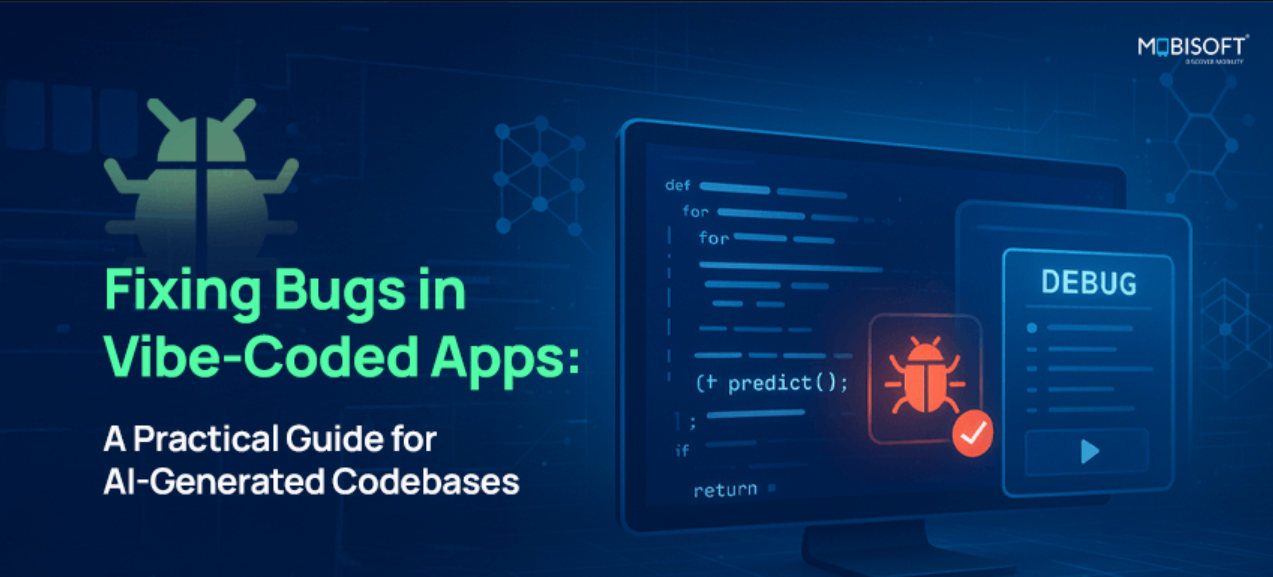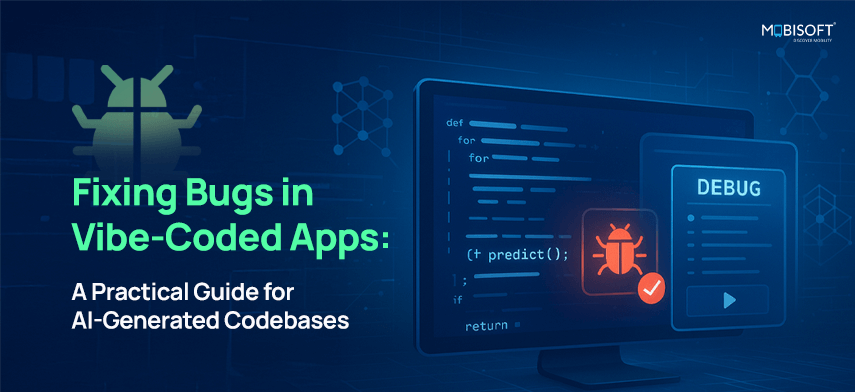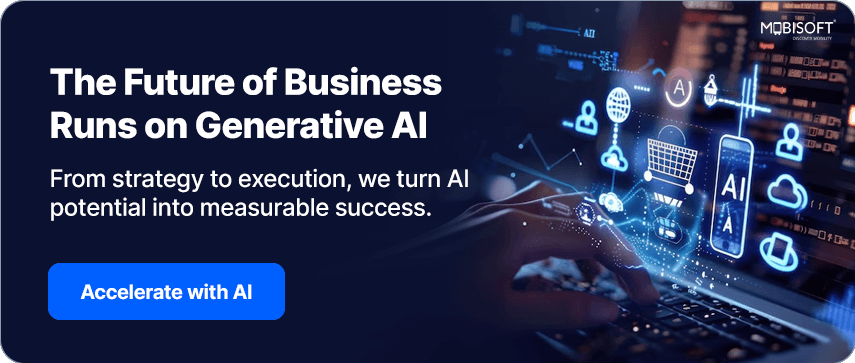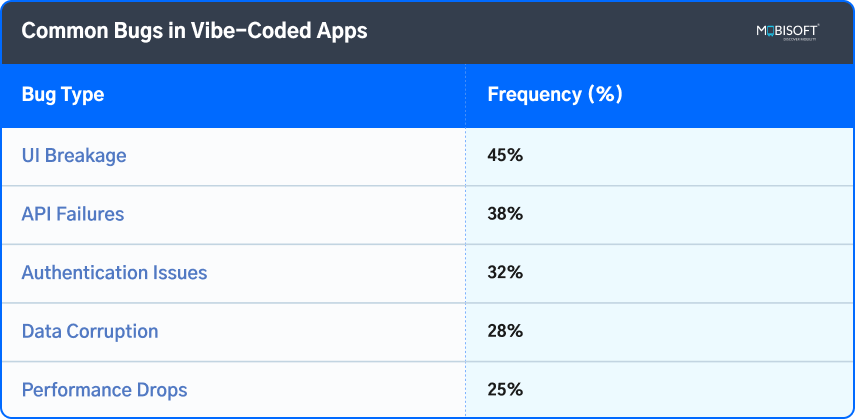Mastering Codebases for AI: Pragmatic Techniques for Effortless Debugging and Maintenance

Fixing Bugs in Vibe-Coded Apps: A Practical Guide for AI-Generated Codebases

Vibe-coded apps are fast, flashy, and often built as MVPs. They are built in just days or weeks using AI coding assistants, no-code platforms, or low-code tools. This is very helpful when you need a working app to introduce to the market.
AI now produces 41% of all code, with 256 billion lines having been written in 2024 alone. Recent surveys indicate 44% of non-technical founders now build their initial prototypes using AI coding assistants rather than outsourcing to developers. But it has its downsides. Features start breaking when you make even small changes. You can’t remember where specific logic lives in the code. Users report bugs that you cannot reliably reproduce. Worst of all, you become afraid to touch the AI codebase.
If this sounds familiar, welcome to the world of vibe-coded bug chaos. This guide will help you find a way out by showing how to approach debugging AI-generated code and stabilizing these fragile applications. For a more structured approach, explore our AI development services for expert guidance on AI code optimization.
What Makes Vibe-Coded Apps So Bug-Prone?
Vibe-coded applications are often built in a rush. With the use of AI-based coding platforms and no-code builders, teams can build and test apps in just weeks. This is very useful in investment meetings for presenting a working AI-generated code prototype. But the accelerated pace often hides deep structural risks that appear later.
The real challenge surfaces when these apps move beyond early prototypes. Features start breaking without clear reasons. Developers hesitate to touch the code for fear of creating new issues. The result is a fragile product that cannot grow with users or scale with demand. Let’s look at why these applications are especially prone to bugs.

Lack of Clear Architecture
Most vibe-coded projects skip structured planning. Code lands wherever it can fit, inside UI components, small scripts, or plugged into third-party services. Without separation of concerns, it becomes difficult to trace how logic flows. Over time, this scattered design causes small changes in one place to ripple unpredictably into another a major challenge for bug fixing in AI-generated code.
AI-Generated Guesswork
AI coding assistants are built to predict “what code looks right.” They are not wired to know the specific context of your system. Studies by Georgetown’s CSET revealed that nearly 50% of code snippets by top-tier models had security vulnerabilities like inadequate input checking and poorly optimized loops. These flaws often require bug fixing in AI-generated code, since they can create subtle memory leaks, silent performance degradation, or even broken functionality that shows up only when the app grows.
Rapid Iterations Without Testing
Early prototypes focus on validating ideas. Testing feels like a slowdown. So teams often skip writing unit tests or integration suites. This is workable in the short term, but creates issues when multiple features land on top of one another. Without even minimal tests, developers rely on manual checks or user complaints to find problems. This lack of structured testing complicates automated code debugging later when the app starts scaling.
Copy-Paste and Black Box Logic
Many AI and low-code flows feel like “black boxes.” Developers copy a snippet, paste it, and move forward—without understanding how it handles input or manages state. Over time, this creates common bugs in AI-written code that are difficult to trace. The lack of comprehension grows dangerous as more code accumulates, making debugging code written by AI far more complex.
Tightly Coupled Systems
Another recurring weakness is tightly coupled components. UI, data models, and services are often linked without clear contracts. Change a small detail in the login form, and the dashboard stops rendering. Modify a payment handler, and email notifications fail. This tight coupling amplifies error handling in generated code challenges and slows down the process of stabilizing AI-generated applications.
Learn more about generative AI solutions for AI code generation best practices.
Common Bugs in Vibe-Coded Apps

For continuous stability, consider implementing DevOps for AI applications, including automated bug fixing in AI development.
CTA: Read more:
- AI
- Vitamins
- Health
- Admin/office jobs
- News
- Art
- Causes
- Crafts
- Dance
- Drinks
- Film
- Fitness
- Food
- Games
- Gardening
- Health
- Home
- Literature
- Music
- Networking
- Other
- Party
- Religion
- Shopping
- Sports
- Theater
- Wellness


